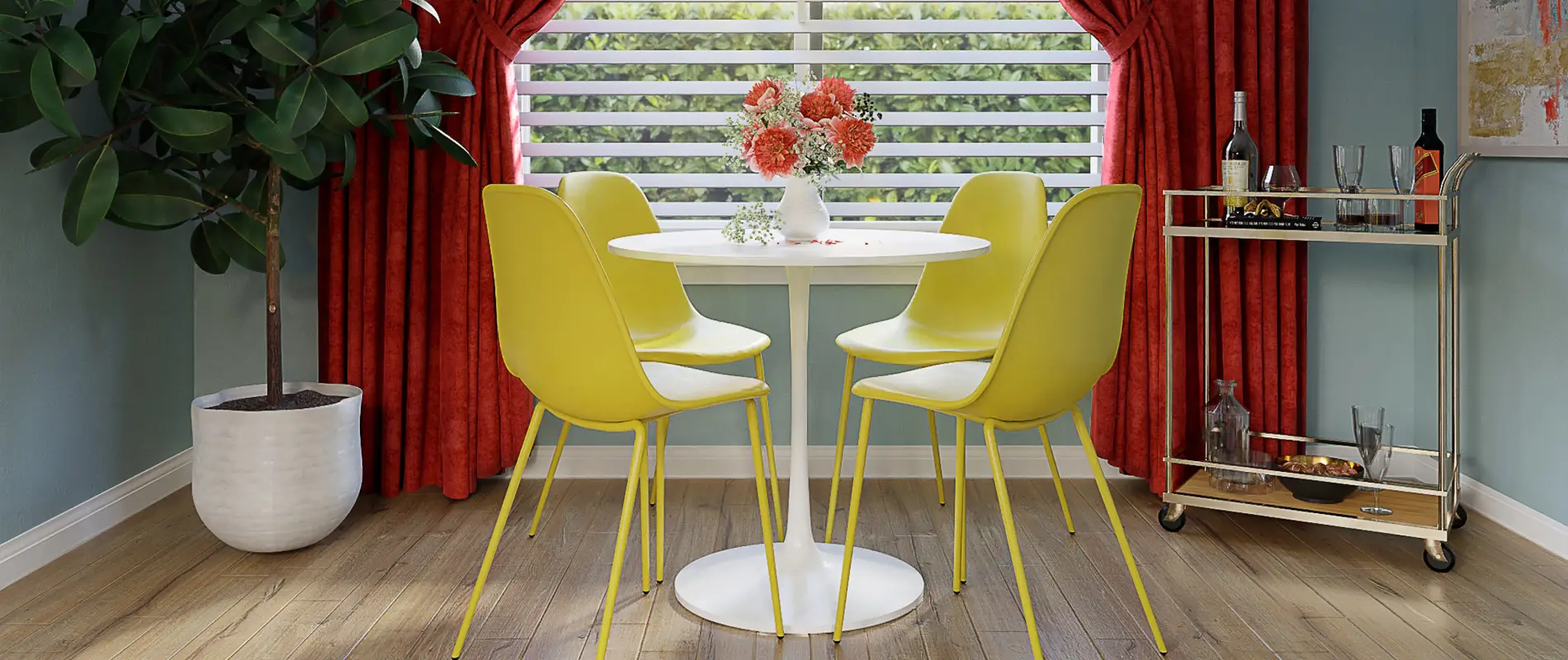
WordPress themes: Pure Footer Dark PFD-12
Build WordPress sites with MaxiBlocks. All features free forever. No locked functionality. Optional Cloud Library saves you 10+ hours per project. Start free
Elevate your website with this stunning footer block design
Bring a touch of modern elegance to your WordPress website design with our stunning footer block. This sleek and modern layout balances functionality and aesthetics, making navigation a breeze for your visitors.
Original design overview
The footer showcases a multi-column layout with clearly defined sections, all wrapped up in a neat and tidy package. With your logo displayed prominently, navigation links guide your users effortlessly through your site, ending with a dedicated area for website footer copyright and credits.
1. Layout analysis
- Overall Structure: Enjoy a clean, multi-column design that enhances usability while boosting aesthetics.
- Arrangement: A well-thought-out row with essential links followed by another for copyright information, integrating navigation and legal details seamlessly.
- Asymmetry: A deliberate balance achieved with centred navigation links, offering a visually appealing website footer layout.
2. Element and feature description
- Visible Elements: The bold, top-placed “LOGO” ensures brand visibility. It features intuitive navigation links like “Home,” “About Us,” “Shop,” “Blog,” and “Contact.”
- Interactive Elements: With engaging social media icons, users can easily connect across platforms. Navigation links function dynamically as effective hyperlinks.
- Typography: A bold typeface for the “LOGO” contrasts with smaller navigation links, emphasizing the brand effectively.
- Graphical Elements: Visual cues like social media icons enhance interactivity.
3. Unique design aspects
- Standout Features: The bold logo captures attention, ensuring your brand stays visible.
- Hover Effects: Expect interactive hover effects that bring navigation links to life, even if they’re not visible in static images.
- Responsive Design: Designed with adaptability, the footer offers a seamless experience across mobile devices.
- Accessibility Considerations: Clear text and recognizable icons demonstrate a strong commitment to user accessibility.
4. Overall design style
- Design Style: A contemporary, minimalist approach that prioritizes functionality without compromising style.
- Visual Hierarchy: The logo captures immediate attention, directing users naturally to essential navigation options.
- White Space and Balance: Thoughtful use of white space creates a clean, organized feel, enhancing readability.
Summary
This website footer block embodies the perfect blend of style and clarity. With its minimalist layout, clear navigation, and prominent branding, this footer not only enriches the user experience but also strengthens your brand on your WordPress site. Step up your site today with this exceptional footer design!
10 use cases for the footer
1. Business websites
For a business website, a footer serves as a perfect anchor for vital company information. It can host links to privacy policies, terms and conditions, and a sitemap. Adding a quick contact section with an email or phone number can significantly enhance user interaction. Incorporating a copyright statement affirms proprietary rights while social media links enable further community engagement. Customise the footer with icons representative of your company ethos, using bold typefaces to accentuate the brand presence.
2. E-commerce sites
An e-commerce site can utilise a footer effectively by including important sections like Customer Service, Shipping Information, Return Policies, and Frequently Asked Questions. It’s the ideal place for integrating secure shopping badges for added customer reassurance. By adding links to popular categories, users can navigate more seamlessly. Highlightoffering these elements ensures that users feel more confident and informed, potentially leading to higher conversion rates.
3. Blogs and personal websites
A blog footer can guide readers to essential pages such as About, Contact, Privacy Policy, and a subscription link to keep up with the latest posts. Personal websites, especially for creatives, can include social media icons that link to portfolios and works hosted elsewhere. This enhances branding and broadens reach. Additionally, users can navigate archives or related content, making it easier to explore the website’s depth and diversity.
4. Online communities and forums
The footer of any online community or forum should link to community guidelines, rules, and support. This sets clear expectations and maintains a structured environment. Links to user profiles, memberships, and social media groups encourage interaction and active participation. Footers become navigational hubs, guiding users to essential resources, enhancing engagement and community growth.
5. Educational websites
Educational websites can utilise footers to provide links to important academic resources, privacy policies, and terms of service. Directories with locations and contacts make the interface more intuitive for visitors seeking specific information. Important notices, along with quick links to library or academic calendars, can enhance navigation while maintaining an educational focus. Social media connections broaden reach beyond the immediate audience.
6. Nonprofits and charity organisations
For nonprofits and charities, the footer can be a cornerstone for promoting mission statements, donation links, contact information, and legal disclaimers. Showcase impact reports or share success stories through the footer to inspire engagement. Encourage potential volunteers with easy-to-navigate sections directing towards volunteer opportunities and upcoming events, optimising the footer for community growth and outreach.
7. Government and public service websites
Government websites benefit from footers that link to legal disclaimers, public notices, emergency contacts, and frequently visited pages like news and events. This makes the website immediately recognisable and user-focused. Additionally, connect users with essential services through accessible links, maintaining a streamlined experience and promoting public participation.
8. Entertainment and media sites
Media websites can thrive with footers that host important sections like Latest News, Featured Articles, and Subscription Services. Social media integration enables broader community engagement while promoting shows or events. A footer also provides essential business links like revenue streams or affiliation programs, keeping the entertainment vision clear and connected with its core audience.
9. Hospitality and travel sites
For the hospitality industry, a footer can ensure seamless booking processes by including quick links to Booking, Customer Service, Terms, and Packages. Incorporate affiliate partnerships or popular recommendations to enhance visitor experience and trust. Social media icons offer guests an opportunity to share their experiences, increasing organic reach and promotional activities.
10. Technology and IT services
A technology website can benefit by hosting case studies, tech blogs, support resources, and contact information within its footer. Showcase certifications or slack links directly from the footer to establish credibility among potential clients. Key stakeholder partnerships and client testimonials can also enhance brand visibility and engagement through footer design.
5 ways to use the footer
1. Boost SEO
The footer can significantly boost your site’s SEO by containing essential keywords and links. Well-implemented website footer SEO practices improve searchability and navigation, enabling your site to rank better across search engines. Embedding a sitemap further allows crawlers to easily navigate and index important pages.
2. Enhance navigation
A well-designed footer simplifies navigation by offering quick links to crucial site areas. It essentially acts as a second menu, ensuring users find what they need with fewer clicks. Linking to key sections like Terms of Use or Privacy Policy improves accessibility and user experience while retaining site structure. This ensures your page retains its ease of navigation across platforms.
3. Reinforce branding
The footer can reinforce your site branding with consistent website footer fonts, colour schemes, and logos. Keep the visual hierarchy intact, directing attention towards essential elements like your brand logo while balancing the colour palette for comprehensive brand consistency. Done right, this effort can enhance brand recognition and commitment.
4. Improve accessibility
Footer accessibility can assist people with disabilities by reassuring them of a comprehensive user experience. Use clear text and visually recognisable icons for better engagement. Adding screen reader-friendly labels and logical link structures significantly enhances usability for those responsive WordPress design, making your website inclusive across demographics.
5. Drive conversions
A strategically designed footer can guide users towards desired actions, like newsletter subscriptions, membership enrolment, or even e-commerce checkouts. Well-placed call-to-action buttons streamline the conversion process, allowing users to easily accomplish their tasks and encourages return visits. Incorporating social proof with testimonials or trust badges can further influence positive decision-making.


